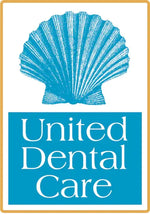
Dental Implants in Culver City CA | United Dental Care
Don’t assume that the gap left behind by your lost tooth can remain empty. Remember that an exposed tooth socket faces the risk of infection, which can cause teeth to shift out of alignment. These cases can be avoided, though, with dental implants.



Did you know that among the entire population of people in the United States, around 120 million of them have at least one missing tooth? And despite significant innovations in dental treatment procedures such as dentures, dental crowns, or bridges, remain inadequate in addressing spaces caused by a missing tooth.
Learn more about today’s top-notch replacement for a missing tooth. Check out Culver City’s Dental implants and learn how this treatment stands out among other dentistry options in town.
What are Dental Implants?
Dental implants are toothlike dental devices used to fill in gaps or spaces left commonly by post-extraction procedures. These stand out as unique among other dentistry treatments because of the artificial screwlike tooth roots surgically inserted into the jawbone to provide a strong foundation, restoring the natural chewing mechanisms of a person.
This treatment is classified under prosthodontics – the branch of dentistry that focuses on designing, creating, and fitting prosthesis oral devices. Only prosthodontists, general or cosmetic dentists, oral surgeons, and periodontists can provide these implants and perform the treatment.
Unlike dental crowns, dentures, and bridges, implants are considered great replacements for missing teeth. As these are clinically fused with the jawbone, no poor-fitting issues arise. Hence, dental implants provide an improved natural appearance, speech, and comfort than all other dental treatments.

Got Dental Insurance?
We've partnered with more than 70 insurance companies.
Check our list now for your treatment needs!







What are the three types of dental implants?
Just like most treatments in restorative dentistry, dental implants also come in different types. Check out the following list as your quick guide:
| Type | Key Features |
| Endosteal Implants |
• Mostly recommended to patients with healthy jawbone • Uses prosthesis screwlike tooth roots that are fused to the jawbone • Average Healing Period: 4 to 6 months |
| Subperiosteal Implants |
• Best suited to patients with narrow space for an implant in the jawbone • Best alternative to Endosteal implants if you refuse to have your jawbone fused with this prosthesis device • Implants rest on top of the bone, yet under the gum, through a metal frame • Average Healing Period: 3 to 6 months |
| Zygomatic Implants |
• The least common type of dental implant • If the space is too narrow for an implant, instead of positioning the device in the jawbone, this procedure uses the patient’s cheekbone • Average Healing Period: 6 to 8 months |
Other techniques include All-on-4 Dental Implants. This replacement best suits edentulous patients or those who have completely lost their teeth. Patients with severe gum disease, decay, and broken teeth also take advantage of this. The procedure uses four dental implants strategically positioned to the jawbone to give a good foundation to the complete prosthetic teeth, deriving the name “all-on-4 implants.”
Our experts in Culver City Dentist United Dental Care still advise having your implants done by a professional. They also note how important it is to attend your scheduled consultation date for check-ups and maintenance. Failure to do so will jeopardize your oral health and implants.



How do dental implants work
Getting your dental implants done requires a series of dental visits. It starts with a pre-treatment consultation that undergoes the following procedures:
Step 1. Comprehensive Dental Evaluation. Dental X-rays and 3D images are taken to secure the exact model of your oral structure.
Step 2. Thorough Medical History Review. Our dental expert thoroughly examines your medical condition, including all the medications you take. These are of equal importance to ensure a successful implant process.
Step 3. Diagnosis and Plan. After the evaluation, your doctor shall recommend the best treatment option that suits your oral condition.
On the actual date of surgery, the typical procedure goes as follows:
Step 1. An incision is made in the gums to expose the bone.
Step 2. Holes are made exactly where the implants shall be positioned.
Step 3. Implants are then installed, and a partial denture is placed.
After the surgery, a time is allotted for osseointegration – that is, when the jawbone fuse with the surface of the implant. It signals that the implant has achieved a solid base already. After which, you have to undergo the following:
Step 1. Re-opening of the gums to expose the dental implant. We do this process to facilitate the installation of the abutment (or the piece where the crown will be eventually placed)
Step 2. The gum tissue around the abutment is closed for healing.
Once the surrounding tissues heal, you shall choose your new artificial teeth – be that removable, fixed, or a combination of the two. That will then be positioned in the abutment and serve as your new teeth replacement.
Post-Dental Implant Care
On average, an implant could take up to 6 months to completely heal. However, this could take longer if the necessary guidelines are not taken and given much attention. Hence, post-dental implant care is necessary to ensure a fast and effective healing process.
The following are the lists of dos and don’ts that one has to be particular of after getting dental implants:
| DOS | DON'TS |
| Practice good oral hygiene | Don’t smoke |
| Have your dental visits regularly | Don’t use activated charcoal toothpaste designed for whitening |
| Use a soft-bristled toothbrush | Don’t chew or bite hard food |
| Use antimicrobial mouthwash that contains chlorhexidine-gluconate | Don’t bite directly with your implants after surgery |
| Use fluoride-based toothpaste and any of those with ADA Seal Acceptance | Don’t consume sugary food and caffeinated beverages |
| Consume healthy food, especially those that are rich in healing nutrients | Don’t use a straw when drinking to avoid flooding down clots after surgery |
Consult your dentist should your implants cause any discomfort. Take note, however, that experiencing pain is a normal aftermath of having dental implants. As to the clinically recommended home-care treatments to reduce pain, here are the following:
1. Take the prescribed painkillers and over-the-counter medicines
2. Have enough rest and refrain from stressful physical activities
3. Apply a cold compress to reduce swelling and pain
How do you know if you’re a good candidate for dental implants?
Generally, anyone healthy enough to bear oral surgery can be a good candidate for dental implants. However, to ensure a successful implant, one should have a healthy jawbone and gums to hold the prosthesis device in place without getting any infection. Otherwise, your dentist will not recommend getting any implants at all.
People with terrible oral hygiene, severe tobacco addiction, bad medical condition, uneven jawbone structure, and advanced periodontal disease are also not advised to have dental implants.

Frequently Asked Questions
Usually, the prosthesis tooth and dental implant have a 1:1 ratio. It means if the client needs two teeth replacements, then two dental implants are recommended. However, there are cases where a complete set of teeth can be done through 4 dental implants alone. This procedure is called the all-in-4 dental implant.
Yes. If no teeth are seen after a comprehensive examination of your dental features, then no tooth extraction shall be made. Only incisions necessary for the surgery shall be done to install the implants completely.
The screwlike tooth roots implanted in the jawbone are permanent, while the visible prosthesis teeth structure can be removed. Thus, the implant itself is not removable; only the alternative teeth replacement can be changed over time.
Yes. You can get magnetic resonance imaging (MRI) even with dental implants. So long as your doctor is aware of it, your implants couldn’t interfere with the MRI procedure and result.
Yes, provided that you have healthy gums and jawbone, replacing all your teeth with implants is the last reasonable intervention you could have to save your oral health. The All-in-4 Dental implant is a top-notch solution to replace the entire set of teeth completely.
Usually, the complete set for both the upper and lower teeth would require 12 to 16 dental implants. However, with the aid of an All-in-4 Dental implant, it has become possible to have a full-mouth teeth replacement with just eight implants. That is to say, four implants in the upper and four implants in the lower set of teeth.
In most cases, implants are made of titanium, a non-magnetic metal. Hence, metal detectors that function through an electromagnetic field would leave your implants undetected.
Although implant surgery has side effects, possibly due to the damage to the sinus cavity or the nearby area, research has not yet proven that this prosthesis device causes the experience of chronic headaches. Better consult your doctor if serious and unrelenting pain is experienced.
Book an appointment with our dental experts
You still have a choice to replace a post-extracted tooth and fill those unwanted gaps.
Achieve a perfectly complete smile with Culver City Dentist United Dental Care.
Consult our team of experts and see the benefits of having these prosthesis devices implanted.
Never shy away from this opportunity. Send us your quick query by booking an appointment or dialing the following numbers: (310) 390-6000.



